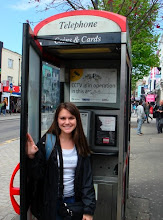I had a lot of fun making it and would appreciate any feedback.
I also uploaded it to TeacherTube. Click here to check it out (but remember that you have to be a member and sign in to watch it).
Also, just to make sure I cover all the bases on the assignment ...
Here's my storyboard:
Scene One:
- Cool background layout with “Metaphors and Similes” shown in text and a voiceover talking about how this video will discuss what metaphors and similes are (as well as their similarities and differences)
- A picture showing a woman’s face on one side and a rose on the other with a voiceover saying that a metaphor is a device of figurative language that authors and poets use to compare two unlike things using “is” or “are” (or their past tenses)
- i.e. (to a woman): “Your face is a rose, beautiful, red, and sweet-smelling.”
Scene Three:
- A picture showing the moon on one side and a lamp on the other with a voiceover saying that a metaphor comparing the two pictures could be “the moon was a lamp glowing over the entire world and bathing us in its light.”
Scene Four:
- A picture showing rain on one side and tears on the other with a voiceover saying that a simile is a device of figurative language that authors and poets use to compare two things using “like” or “as”
- i.e. “The rain falling down outside my window was like the tears streaming down my face.”
Scene Five:
- A picture showing the sun on one side and a smiley face on the other with a voiceover saying that a simile comparing the two pictures could be “your happy disposition is as the sun smiling down on everyone.”
Scene Six:
- Text saying “Metaphors versus Similes” in the background (differences and similarities)
- Metaphors say something “is” something elseo
- Similes say something is “like” something else
- They both make comparisons using figurative language
Scene Seven:
- Credits and background music
and ... here's the Utah State Core this project fulfills:
Standard 1, Objective 3 (Comprehension of Literary Text): Comprehend literature by differentiating the uses of literary elements in narrative texts, Part E. Compare types of figurative language (i.e., simile, metaphor, and symbolism).


Nicole, your video looks great! In fact, I think I'll show it to my daughter, who is doing some creative writing for school and needs to use more metaphors.
ReplyDeleteAnyway, the only suggestions for improvement that I had were that it would be helpful if you paused to allow people to think of their own similes/metaphors before you gave your own. Also, your credits at the end were way too small to be read.
Overall, good job!